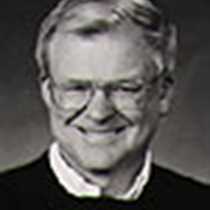If, 196 years later to the day, we could visit with the two explorers at Astoria, they would certainly give much credit for their success to some other folks, the Indians they met along the way. The Mandan and the Nez Perce were invaluable with their information, their food, their friendship. One of the remarkable individuals they would meet was Comcomly. He was a great chief of the Pacific Coast Chinook Nation.
Born in 1765, Comcomly would encounter and assist the early explorers to the Columbia River region. He would meet, befriend and help so many whites during his 65 years of life. This Indian burial canoe was built by his descendants and dedicated April 12, 1961 at the Astoria Column. A line memorializing him states that he was " known to Lewis and Clark, honored and respected by founding Astorians, Northwesters and the Hudson Bay traders."
On a beautiful sunny May 14, 2000 in Astoria, our modern-day adventurers following "In the Wake of Lewis and Clark" visit Fort Clatsop and the Maritime Museum. By the end of the day, they understand the significant contribution of Native Americans to the success of Lewis and Clark's momentous journey.




